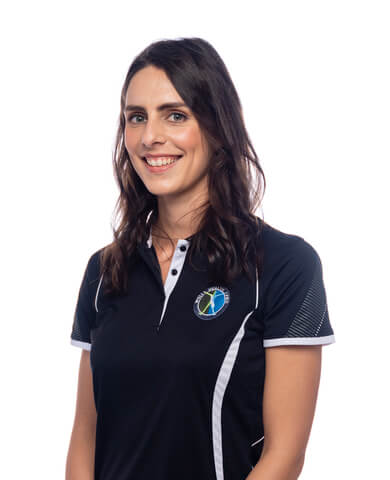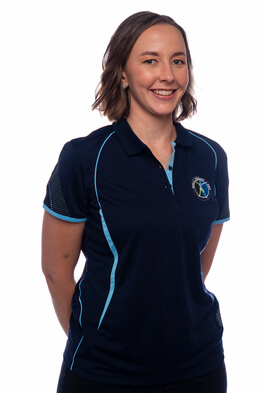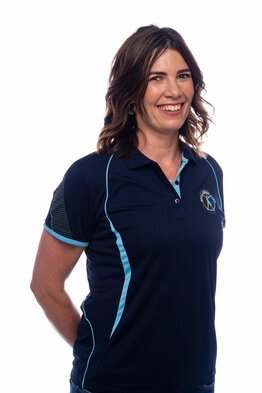Cryotherapy sounds serious, but it just means ice treatment. Cold compression is commonly used for acute injuries to reduce swelling and decrease pain. Ice therapy is engrained into us like folk tales. However very few people actually use this easy, cost effective option as self treatment at home. This article explains exactly what you can expect from cryotherapy and how ice can magnify your recovery. The benefits of cryotherapy are not exclusive to Wim Hof and his followers.
Cold or heat? Now you might ask, how do I know if I should use cold rather than heat? We get asked that exact question on a daily basis. Let us explain the spectrum of cryotherapy and the use of heat in tissue healing. Ice mainly lowers blood flow and cellular metabolism, which is crucial to limit blood gushing into a muscle tear or flooding a joint. These are vital uses of ice to take control of tissue damage and delay an inflammatory response.
What exactly is cryotherapy?
Cryo refers to extreme cold. Cryotherapy is the use of ice as a treatment. Ice or something equally cold is applied to the injured area. Frozen veggies or gel packs can be just as effective because it can mold over and around nobs and dents.
Why we use cold therapy?
Ice treatment limits inflammation and pain by reducing the capillaries size. Cold compression slows down cellular metabolism in the area and therefore reduces secondary tissue damage. This is damage that happens because of the injury, but not with the acute trauma of the injury. When you sprain your ankle, the lateral ligaments are directly injured by the trauma, but the accompanying ankle stiffness is secondary to the injury. Cryotherapy also has a numbing effect on the nerves.
Healing Effects of Ice therapy
- Decrease swelling
- Ease pain
- Reduce inflammation
- Decrease muscle spasm
- Increase muscle strength
“Easiest & cheapest way to do damage control caused by injury”
Ice treatment
Physiotherapists use ice bath therapy as part of injury treatment. The aim of ice therapy is to decrease pain and swelling, applying ice alone will not fix your problem. Cryotherapy is a passive treatment modality, that we can teach you to do at home. It can be used for 5 – 20 minutes, up to 5 times per day. We prefer using more active treatment techniques during consultations.
Ice compression can be applied to all kinds of musculoskeletal injuries to reduce inflammation. This in turn decreases pain and means that we can get you back moving sooner, rather than later.
Cryotherapy is a great option when rapid recovery is required between exercise sessions with evidence suggesting that cryotherapy increases strength gains following resistance training. The effectiveness of cryotherapy for recovery is dependent on reducing muscle temperature for long enough and soon enough after the training ended. Cold water immersion, typically in water temperatures of 15 °C or less for a single duration of 15 min is one of the most popular recovery strategies used by athletes following exercise.
Different types of cryotherapy
Ice packs
This is the most common way to use cryotherapy. Ice cubes or crushed ice is placed inside a wet towel and put on the site of the injury. The towel helps conduct the cold deeper and keeps the temperature cooler throughout the application.
Submersion/contrast baths
With injuries to the hands or feet the entire limb can be submerged in ice cold water. Especially in cases of severe swelling or stagnant circulation, like after having a cast, contrast baths can be used. You alternate cold and warm submersion to create a “pump like action” of the capillaries. First, the capillaries dilate in the warm water, then contract (constrict) in the cold.
Ice sprays
You can get temporary relief by using an ice spray. Ethyl chloride or fluorimethane cool the skin by evaporation. This is a temporary, superficial treatment option.
Ice massage
When treating a small area, like some tendinopathies (Achilles tendonitis or Patella tendonitis), a single ice cube can be used to massage the painful area before and after rehabilitation exercises.
Controlled compression unit
These units are found in orthopedic wards world wide. A big water cooler is connected to a custom made pack for the shoulder, knee or ankle to circulate ice water around the operated limb continuously.
Anatomical changes you’ll notice with cold compression
When cold compression is applied to the skin the first thing you’ll feel is cold, sometimes slightly uncomfortable, and then ultimately the area can feel numb. We expect ice therapy to reduce muscle temperature to 10 – 15 degrees celsius, about 2 – 3 cm deep when applied for 20 minutes. This drop in temperature causes some physiological changes that reduce pain and limits secondary tissue damage to ultimately enhance your recovery.
Changes on a cellular level with cold therapy
Cryotherapy influences hemodynamic, metabolic and neuromuscular processes.
Ice application causes vasoconstriction, meaning the width of the capillaries decreases in size, which reduces local blood flow to the injured area. Like using a thinner hosepipe to water your garden. This decrease in blood vessel diameter happens because the cold temperature causes the smooth muscle within the blood vessel to contract. Once the tissue cools down the release of histamine and prostaglandins, both ingredients of inflammation, is also limited. Less inflammatory ingredients = less swelling.
With this reduction of circulation, the cellular metabolism decreases too, which further reduces the temperature of the injured limb. Because of the Lewis Hunting reaction, which states that a limb exposed to cold therapy undergoes alternating vasoconstriction and vasodilatation, the blood vessels widen after 10 minutes of cold exposure. This in turn increases circulation and temperature in the area once again. Pumping action is created the longer cold compression is applied because of this phenomenon.
Applying ice causes local anesthesia, without any of the side effects of oral medication. This reduction in pain is caused by reducing the speed of the nerve conduction velocities. This conduction velocity will decrease in proportion to duration and drop in temperature caused by ice therapy. This happens because of the gate control mechanism, where the body is more pre occupied by the cold messages than the pain messages. This gives us the window of opportunity to get started with range of movement exercises while your pain is less.
The effect of cryotherapy depends on the method, duration and temperature. Our physiotherapists have in depth knowledge of your body’s anatomy, physiology, and injury recovery and will advise you on what to do at home.
Cold therapy feels like:
Cryotherapy will feel cold naturally. Interestingly when researchers experiment with pain experience, they make use of ice submersion, so make no mistake, it is not entirely comfortable to use. But ice therapy is very safe to use. The body adapts quickly, just like getting into a swimming pool for the first time in summer “it’s fine once you’re in”. The first minute may feel extremely cold and slightly painful, then the area starts to feel a little numb. Once the ice compression is removed you will have less of your original pain and be able to make bigger movements with your injured limb. Now is the perfect time to do your range of motion exercises.
How long does ice treatment take?
Ice compression can be applied from 5 – 20 minutes at a time, multiple times throughout the day. Because cryotherapy takes so long and is a passive treatment, we very rarely use cold therapy at the practice, but will explain to you how to make use of it at home.
Your physiotherapist will use your consultation time on active treatment strategies to make the most of our time together. Depending on your injury we will combine soft tissue techniques, massage, deep dry needling, electrotherapy, exercise and stretching to have a bigger and more prolonged effect on your pain and recovery.
How many times should I apply ice compression?
You can apply ice therapy at home 5 – 20 minutes at a time, multiple times throughout the day. While taking the time out of your busy day, why not elevate your injured limb too? You can do your range of motion and isometric exercises while applying ice so save on time too.
What can I do at home to ensure cryotherapy is effective?
Don’t expect more from ice compression than it can give. We still need to address the real cause of the problem. Your physiotherapist will look at the bigger picture and discuss the physiology of recovery with you. With physiotherapy treatment, it is important to comply to the whole treatment plan, including immobilization, and relative rest from training, we’ll advise alternative options to explore during your recovery. This is the best way to ensure a smooth recovery and get you back to what you love doing in as little time as possible.
There are a few things you can do at home:
- Elevate the injured limb higher than your heart
- Do your prescribed home exercises
- Use your crutches, moon boot or sling as discussed
Cost of cold compression
There are certain medical aid rates for cryotherapy treatment, but they are always used as part of a complete treatment consultation. So, you will never be paying for only cold compression. It’s the complete treatment package that shows real improvement.
Because cold compression is a timely treatment we encourage you to make use of ice therapy at home, mostly during the first week of your recovery. This enables us to make effective use of our time together during consultation.
Medical Aid Code – 007
The cold therapy treatment code 007 is charged when cold compression is used during treatment. We very rarely make use of it at the practice as it takes a great deal of time that we can utilize in a different way. Your physiotherapist will discuss when and how to use cold compression at home. During your consultation time, we will use different treatment techniques (manual therapy, nerve mobilisation, deep dry needling, range of motion exercises, stretches, laser, strapping) to enhance your recovery.
Does it make a difference to have an experienced physiotherapist apply cryotherapy?
Everybody knows to put ice on an acute injury, right? You can’t really get it wrong as long as you keep it simple and protect your skin too.
Our physiotherapists have years of clinical experience and in depth knowledge of your body’s anatomy and know how the different structures interact with each other. You can expect advice regarding what to do and what to avoid, how long to rest and when to get back to training. They understand different pathologies and will know exactly which other treatment options are suitable to help you heal quicker.





